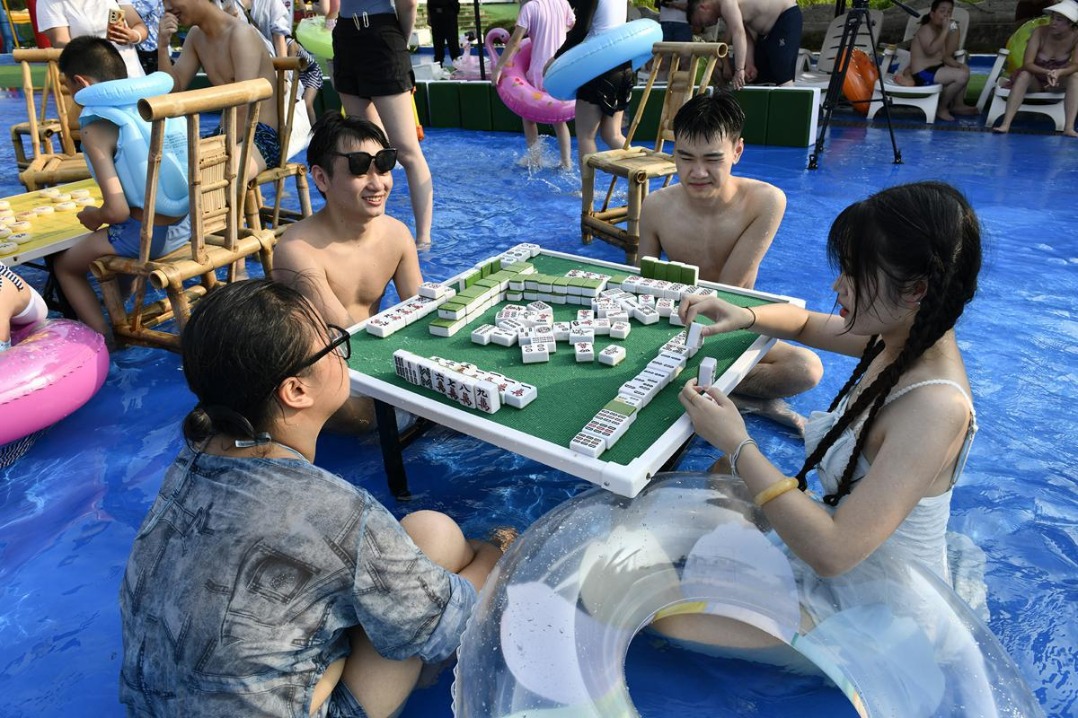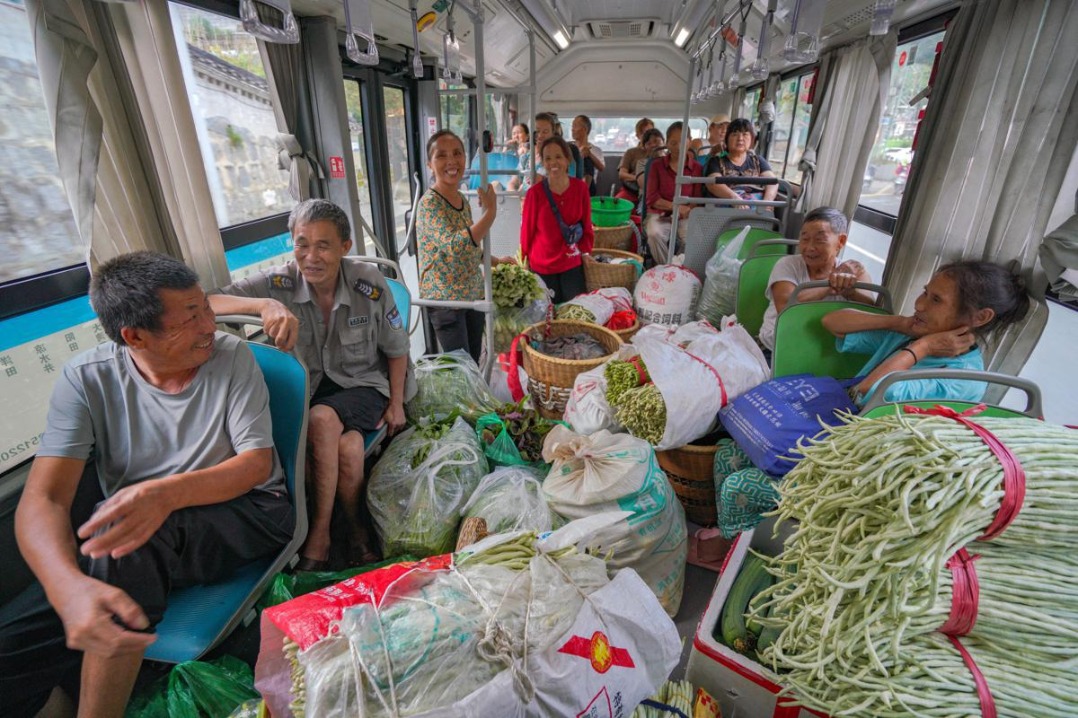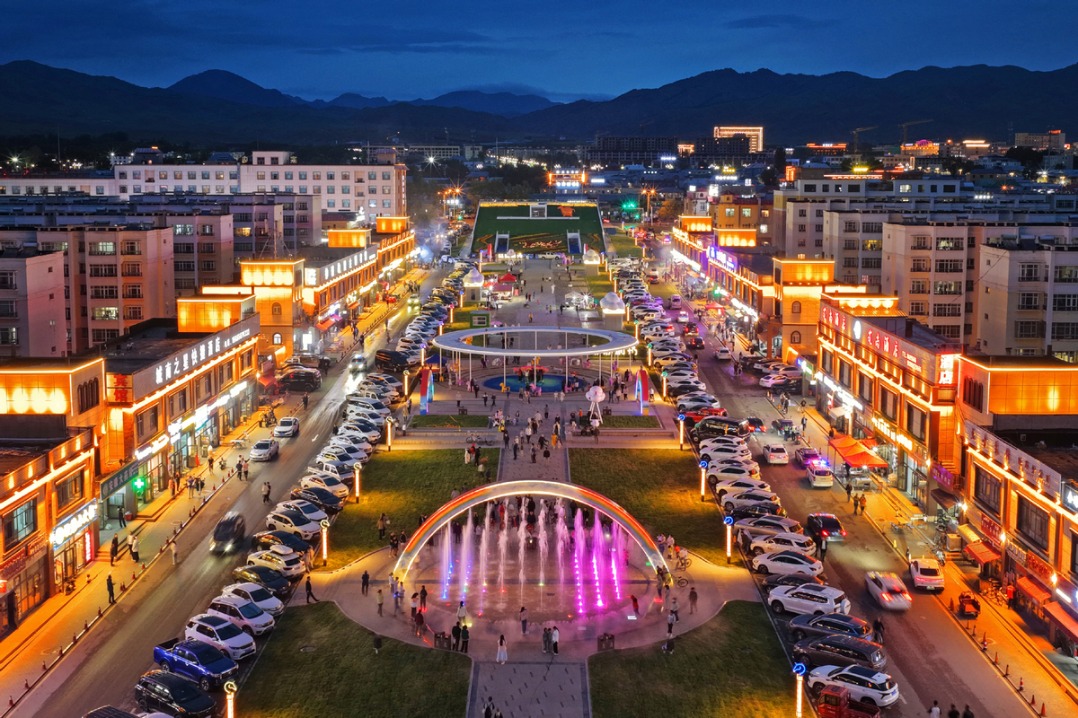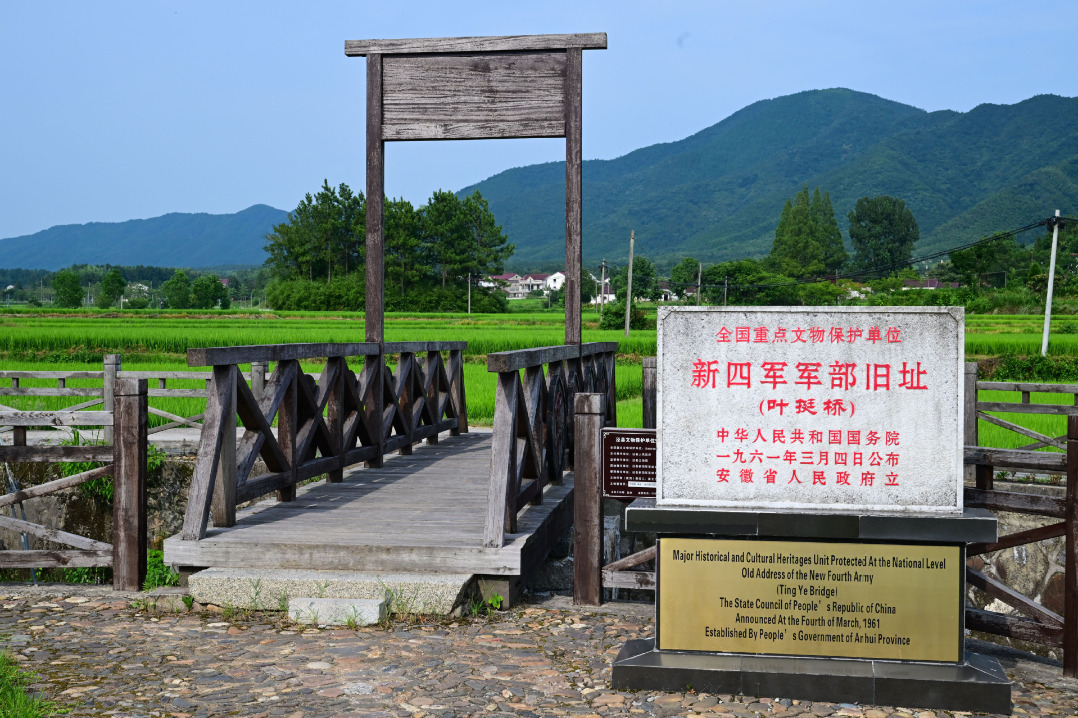Dragon boat festival tantalizes the taste buds

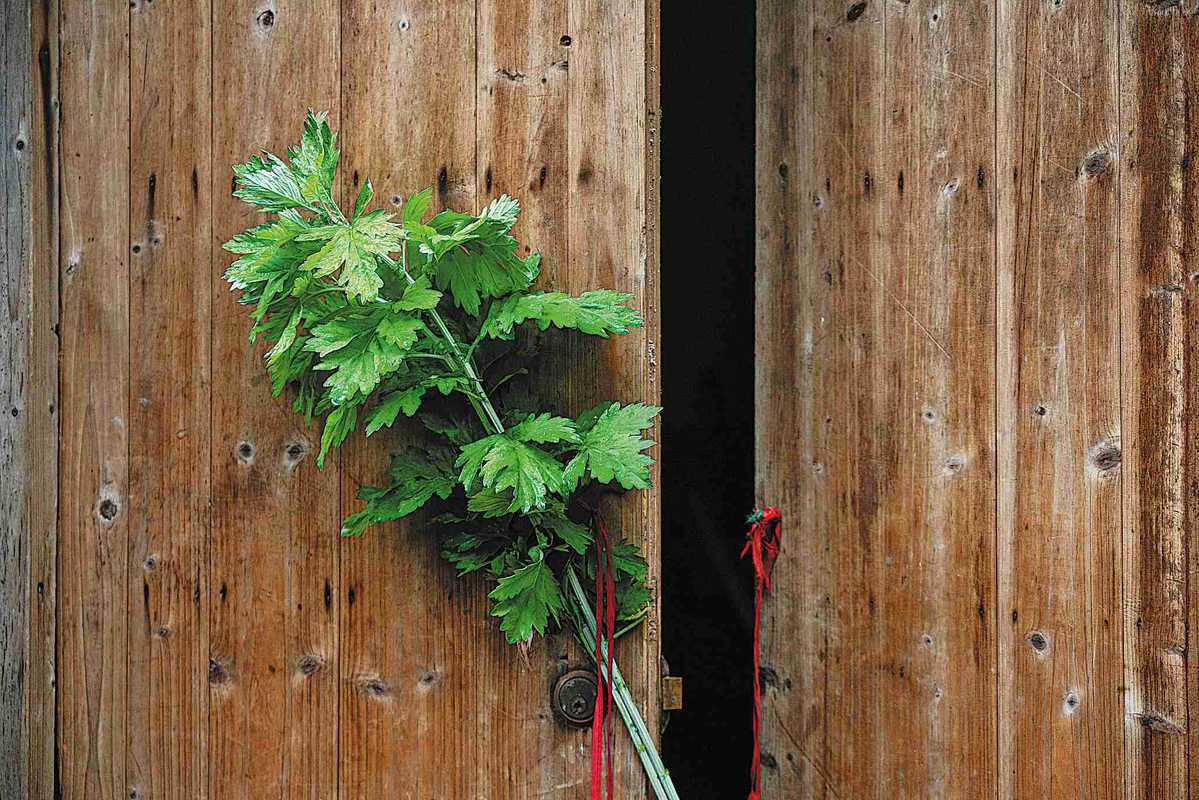
Favorite dishes prepared for occasion, but some old customs are dying out
Grandpa Zhang was pleasantly surprised that his favorite zongzi (glutinous rice dumplings) shop in Shanghai reopened for business on May 16, when the city announced a phased plan to return to normal after a resurgence of COVID-19.
He was greeted with tantalizing aromas of meat and fresh reed leaves wafting from Auntie Cheng's Zongzi Shop in Fengjing ancient town, Jinshan district.
Fengjing, which originated as a village in the Southern and Northern Dynasties (420-581), officially became a town during the Yuan Dynasty (1271-1368).
At this time every year, Zhang buys freshly made pork zongzi, the staple food for Duanwu Festival, also known as Dragon Boat Festival, which this year fell on Friday.
His routine has become more meaningful this time, with local residents involved in a concerted effort to fight the pandemic.
In previous years, tourists from Shanghai and neighboring Zhejiang province flocked to Fengjing to sample freshly made zongzi.
Shanghai news outlet The Paper quoted Zhu Xiaoling, who is in charge of Auntie Cheng's Zongzi Shop, as saying that 10,000 orders for zongzi were placed in a single day last year, and reservations had to be made up to three days in advance.
Zhu is happy that offline sales have been good this year, despite the pandemic.
In the Chinese lunar calendar, the Dragon Boat Festival falls on the fifth day of the fifth lunar month.
In the past, farmers used to harvest wheat, while the elderly and children stayed at home to prepare zongzi, which are simple to make, but require an eye for detail.
The first step is to wash the reed leaves. The fillings, which according to preference consist of glutinous rice, bean paste, red dates, pork or salted egg yolks, are then prepared.
Then comes the most important part-the wrapping. Two reed leaves are placed end to end and rolled into a cylindrical shape, with just a "tail" protruding. Two tablespoons of filling are poured into the cylinder, and the end is sealed with the exposed leaves. After wrapping the zongzi in circles and tying it with thread, the dumplings are ready for boiling in hot water.
Although most families eat zongzi during the festival, the different flavors mark a distinct divide between the north of China and the south.
In the north, zongzi are sweet and usually made from glutinous rice, rhubarb rice, red dates and preserved fruit. The shape of the wrapped zongzi is generally a large triangle or small rectangle. Northerners prefer eating them with a sprinkling of sugar, whereas in the south, the most popular flavor is mainly salty, with glutinous rice, pork belly, salted egg yolk, mushrooms, dried shrimps and mung bean fillings.
- Guangdong urges enhanced mosquito prevention after 1,199 chikungunya cases confirmed
- HK at standstill as No 10 goes up for Wipha
- South China provinces brace for Typhoon Wipha
- China's top legislator to visit Kyrgyzstan, Hungary, Switzerland, attend world parliament speakers conference
- Measures help Tibetan antelope migrate in Xizang
- Xizang Airport sees surge in pet shipments

















